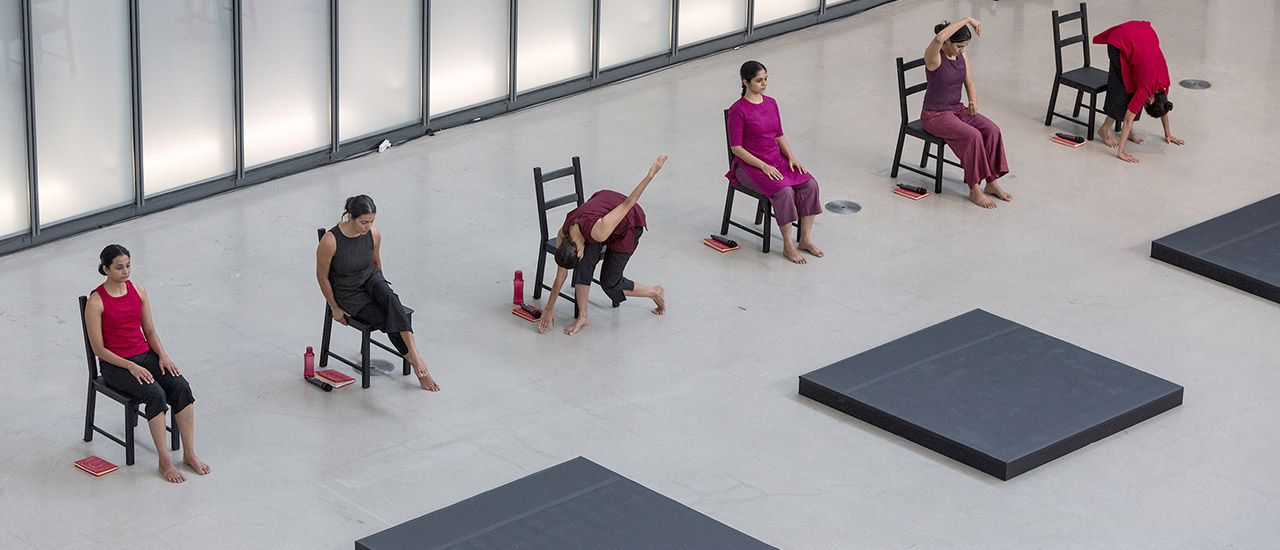
Finding Their Voices Through Art
With more than a billion people calling it home, India is a richly multicultural society and the world’s fastest-growing economy. Its ancient traditions and history sit alongside technological innovations, pressing the country into a new era of opportunities and challenges.
The aspirations and contradictions of this time are no less apparent in Indian art, as Dr. Shanti Pillai has spent the better part of 2018 in India exploring women’s voices in the performing arts in an effort to understand how they try to comment on politics and society through contemporary vocabularies that build upon both traditional forms of artistic expression and global dance and theater. The professor in the theater department of the College of the Arts is able to do this through a Fulbright-Nehru Fellowship.

This prestigious award offers the opportunity of international exchange that allows her to witness a changing cultural field in India firsthand and the chance to expand perspectives on Indian art there and around the world through her published research.
“I am curious to know why and how women artists are pushing definitions of art. Their pioneering approaches to performance-making and production contribute to expanding the roles for women in public life,” she says.
As part of her experience, Pillai is traveling throughout India talking to people in the cultural field as well as to women from many professions about their rights as citizens and challenges in their everyday lives.
“I’ve been privy to so many conversations about the issues in public forums and in people’s kitchens,” she says.
Her curiosity pushes her to know more about the leadership roles of women in artistic practices that seek critical engagement with Indian society, a phenomenon she identifies as “feminist kinesthesia.” These new forms of communication between women performers and their audiences pro- mote greater equity for women and ad-dress oppression and threats to secular, democratic processes.

Studying established artist-mentors of this movement, Pillai explores the careers and influence of role models such as Maya Krishna Rao, Padmini Chettur and the late Veenapani Chawla. These prolific artists are well-known, but appear narrowly in published scholarship, Pillai says.
The scope of her research includes younger artists that show distinct perspectives on the relationship between the body, space, identity and today’s social issues. A new generation of women are making “strong political and aesthetic statements through radical solo work,” she says. This includes artists with eclectic backgrounds in the performing, visual, and cinematic arts such as Mallika Taneja, Daminee Basu, Savita Rani and Malavika Chakravarthy.
“These women artists are exploring new artistic languages that build from both classical forms and texts, as well as transnational techniques and ideas,” she says.
According to Pillai, these artists propose new uses of the body and are building new relationships between performer and audience.
“It’s an interesting moment to think about women as citizens in India,” Pillai says. “There is currently a dynamic conversation about the kind of patriarchal oppression that has long ruled institutions and public space, normalizing many forms of violence.”
Pillai says the women artists she studies are “making provocative statements about women through their work, whether explicitly or implicitly.”
“People are doing all different kinds of things on stage; they are really searching for a performative language that expresses India’s cultural plurality as well as its inter-connectedness with the rest of the world,” she says.

“Some make direct political interventions into the public sphere with their art-making, while some are involved in founding significant art institutions and festivals.”
Pillai’s research aims to relate the work of these women to a broader field of cultural production and audience reception with regards to women’s rights and safety, freedom of expression and Indian “tradition” as she puts it.
Her work is based on the anthropological research method known as “ethnography,” which includes interviewing and intensive observations.
“It takes time to get to know people and to understand the wider world of which they are a part,” she says.
Her work also requires accurately recording in writing what happens in performances and the uses of the body in the rehearsal studio in a way that will be reliable later when she begins to analyze the data she has collected. To this end she also attends workshops with the artists to be able to understand their approaches with her own body.
To get the needed breadth and scope of information necessary, “One needs to see a lot of performances, spaces and audiences to get a sense of the general landscape of contemporary performances in different cities,” she says, adding that “you have to unravel various histories to understand what these pioneering women artists re doing that builds on the past and constitutes something innovative.
Pillai is a dancer trained in the classical Indian dance form called Bharatanatyam. In addition, she has worked in contemporary dance and theater and made her own original works. This gives her first-hand experience with the politics of theater as well as the many perspectives on what “feminist art” should look like and do.
The professor underscores the need for these contemporary voices to be heard, especially when state support of the arts in India is primarily dedicated to classical and folk art forms. Since she is more interested in the contemporary and how it fits into a larger societal context, Pillai views contemporary performance art “less as a marker of time and more as an aesthetic strategy and a way of approaching art that is about investigating and experimenting.”
With this in mind, she will continue to explore how the work produced by women artists responds to social issues, as well as raises questions about what constitutes art in India in the 21st Century.